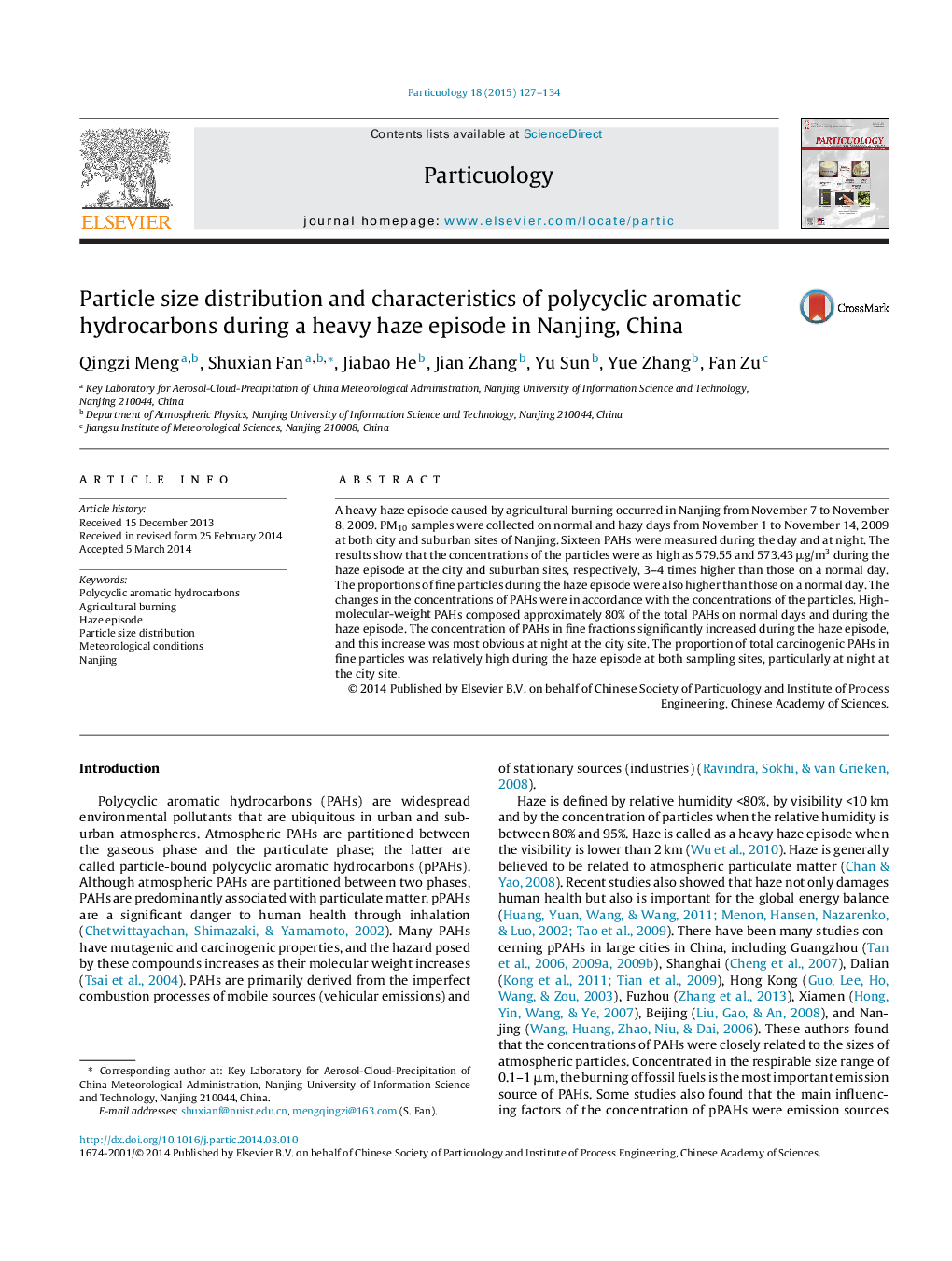| Article ID | Journal | Published Year | Pages | File Type |
|---|---|---|---|---|
| 671886 | Particuology | 2015 | 8 Pages |
•PM2.1 and PM10 samples were collected during a heavy haze episode.•The concentrations of PAHs during the haze episode were 3–4 times higher than in normal days.•Concentration of PAHs in fine particles significantly increased during the haze episode, esp. at night in the city.•Concentration and size distribution of CAN-PAHs were analyzed during the haze episode.•The haze episode was found to be mainly caused by agricultural burning.
A heavy haze episode caused by agricultural burning occurred in Nanjing from November 7 to November 8, 2009. PM10 samples were collected on normal and hazy days from November 1 to November 14, 2009 at both city and suburban sites of Nanjing. Sixteen PAHs were measured during the day and at night. The results show that the concentrations of the particles were as high as 579.55 and 573.43 μg/m3 during the haze episode at the city and suburban sites, respectively, 3–4 times higher than those on a normal day. The proportions of fine particles during the haze episode were also higher than those on a normal day. The changes in the concentrations of PAHs were in accordance with the concentrations of the particles. High-molecular-weight PAHs composed approximately 80% of the total PAHs on normal days and during the haze episode. The concentration of PAHs in fine fractions significantly increased during the haze episode, and this increase was most obvious at night at the city site. The proportion of total carcinogenic PAHs in fine particles was relatively high during the haze episode at both sampling sites, particularly at night at the city site.
Graphical abstractFigure optionsDownload full-size imageDownload as PowerPoint slide
